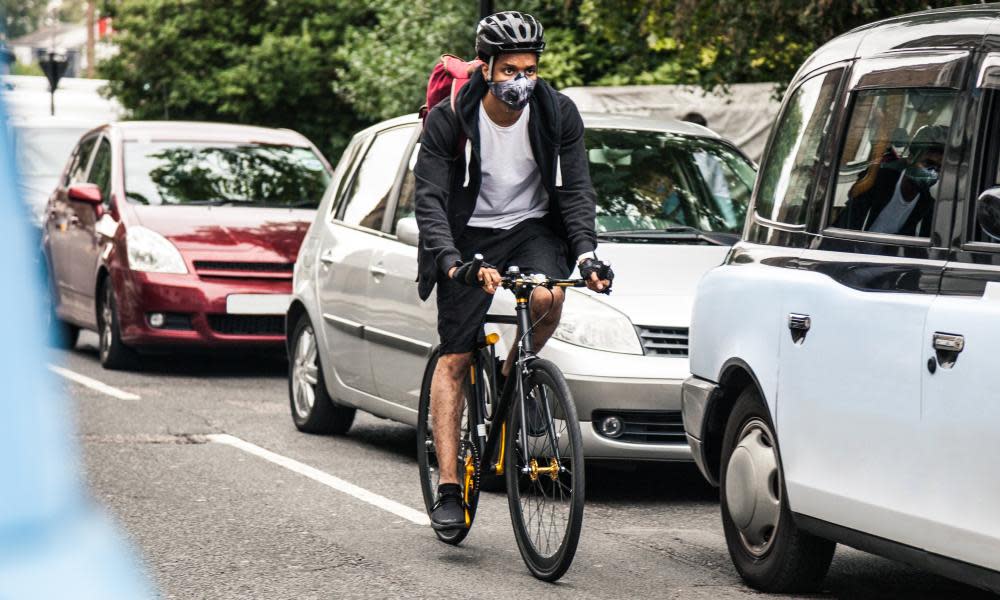Debunking myths about low-emission zones

Clean-air or low-emission zones are being rolled out in more UK cities, and the London mayor is proposing to extend the ultra-low emission zone to the suburbs.
These zones are designed to speed up the attainment of legal limits for air pollution and to lessen the health burden from breathing poor air. While not new, such zones can be controversial, especially when they are introduced or expanded.
Many cities across the UK and Europe have not met legal limits for air pollution that were set in 1999 and should have been reached by 2010.
This is largely due to vehicles that were designed to pass official exhaust tests but produced much more air pollution when actually driven on roads.
Low-emission zones therefore restrict the most polluting vehicles; those that are old, and especially those with diesel engines.
Evidence from London’s schemes and the hundreds that operate in Europe counter many of the myths around these schemes.
First, the zones work, if they are sufficiently ambitious. In 2010, the health benefits from less air pollution in zones in 25 German cities were estimated to be between €760m and €2.6bn.
In 2008, London’s first low-emission zones led to improvements in particle pollution from traffic along busy suburban roads.
Tightening the zone in 2012 created further improvements, compared with areas outside the capital, but progress became slow and patchy, leading to a projection that it would take London another 193 years to comply with legal limits.
The ultra low emission zone, or Ulez, started in 2017 in central London. By October 2022 it had reduced nitrogen dioxide from traffic by 46%. The benefit across inner London was 21%.
Second, air pollution does not get worse outside the zone as a result of diverting vehicles. Instead the experience from London and cities in Germany show the cleaner vehicles are also used in the surrounding area, spreading the benefit. The inner London Ulez also induced accelerated air pollution improvements on the boundary roads.
Third, it is often said the zone charges unfairly penalise the least well off. There are many dimensions to this. It is not clear that the poorest people own the oldest cars. Some clearly do but data from 2010 shows a more complex picture.
Cars in the UK’s poorest areas were, on average, just over a year older than those owned by the most well off. This was generally due to multi-car households in wealthier areas and the age of their second, third and, in some cases, fourth cars. Wealthier people also tended to own more polluting diesel cars, which are those most affected by low-emission schemes.
It is unclear how these patterns have changed in the past 13 years but London data from 2019-20 showed the persistence of the clear relationship between wealth and multi-car households.
Fines are issued to non-compliant vehicles found in the zone. In Scotland the fine is £60 per day. In France it is €68. Schemes in England allow non-compliant vehicles to enter for a charge. This is £9 per day for a car in Bristol and £12.50 in London.
This has led to accusations that the schemes are designed to make money rather than clean the air. However, low- and ultra-low emission charges made up just 3.4% of Transport for London’s income in the financial year 2020-2021, and 6% in 2021-2022. Proceeds must be spent on local transport projects.
Looking at the health consequences of air pollution, poorer communities have most to gain. This may be scant compensation for those facing a daily charge but it is clear that the poor experience worse air pollution than their richer counterparts.
More air pollution is produced per square kilometre in the poorest areas but, when it comes to driving, the poorest contribute least to the problem. Many poorer households do not own a car and those who do drive less than wealthier people.
In 2010, the cars owned in the poorest 10% of the UK travelled just 40% of the distance of those owned in the wealthiest segment.
Many zones have grants to help people upgrade their old vehicles. Londoners can apply for up to £2,000 for a car, £5,000 for wheelchair accessible vehicles and £9,000 for small-business vans.
The UK government funds a scheme for zones outside London but help is available only in specific areas. The charity Asthma and Lung UK has called on the government to fund a national scheme to help poorer households and those with long-term health and mobility problems upgrade to cleaner ways of travel.
Fourth, drivers and other road users are among the groups who gain most from improving traffic pollution. Some of the highest exposures to carcinogenic diesel exhaust happen when people travel along busy roads. This is of particular concern for professional drivers and schoolchildren.
A study of drivers in London found the greatest exposures to diesel exhaust among taxi drivers, couriers and those who drove waste-collection vehicles. A study of more than 200 London schoolchildren found greater exposures among those who were driven to school and those who walked along main roads, compared with pupils who walked to school on quiet roads.
There is strong evidence that air pollution still causes harm at concentrations well below legal limits.
Clean air zones, low- and ultra-low emission schemes can be part of the solution but authorities should go further and continuously improve air pollution for all communities. For example, the Parisian Lez has helped to accelerate air pollution improvement in conjunction with other policies that encourage different modes of travel, further extending the benefits for public health.

 Yahoo News
Yahoo News 
